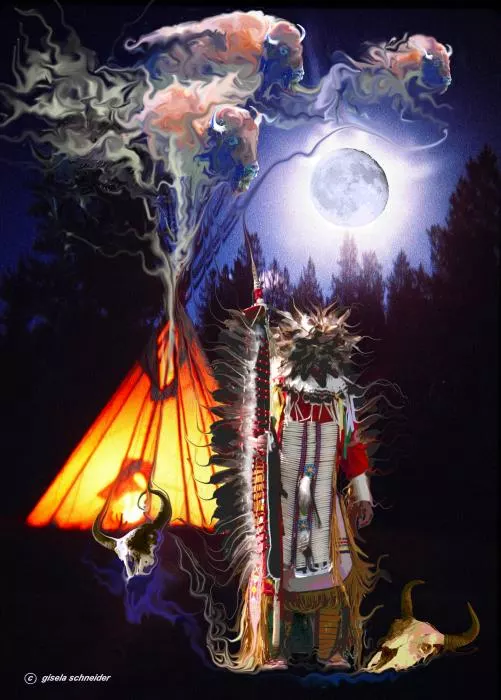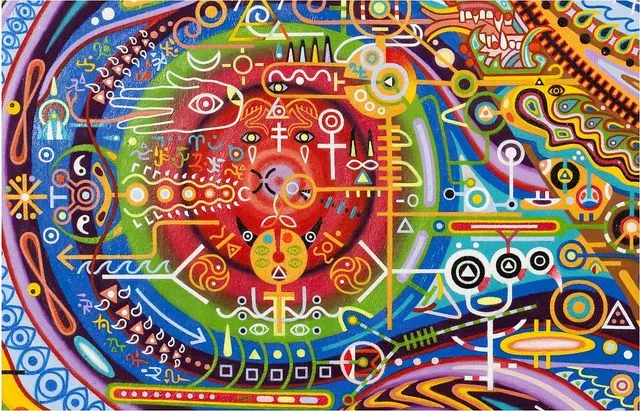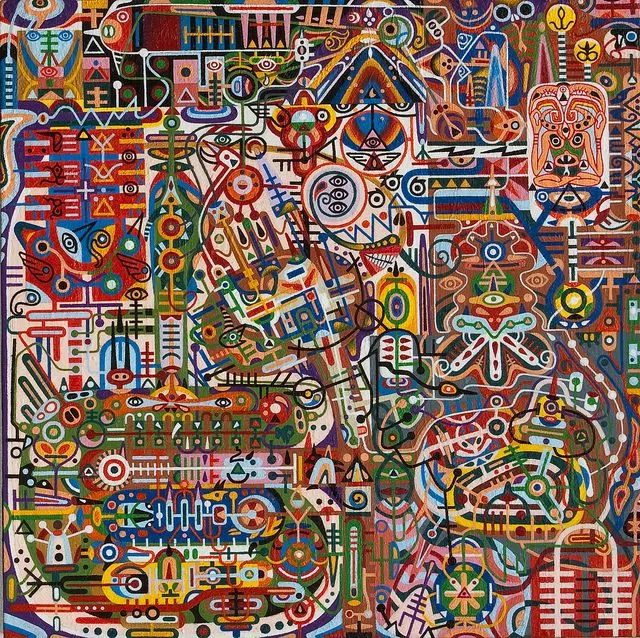“A thing is right when it tends to preserve the integrity, stability, and beauty of the biotic community. It is wrong when it tends otherwise.” ~ Aldo Leopold
The Great Rewilding is an awakening to the realization that we live in a fundamentally unhealthy, unsustainable culture where rampant nature deprivation has exacerbated psychological neurosis and the balance between nature and the human soul has been lost.
 It’s a return to living courage-based lifestyles that are in accordance with nature, as opposed to fear-based lifestyles that are at odds with it. In conservation biology the term “rewilding” is the rehabilitation process of captive animals.
It’s a return to living courage-based lifestyles that are in accordance with nature, as opposed to fear-based lifestyles that are at odds with it. In conservation biology the term “rewilding” is the rehabilitation process of captive animals.
In the case of the Great Rewilding, the captive animal being rehabilitated just happens to be human.
Here are three ways to get the ball rolling toward such a rehabilitation.
1) Modernize rites of passage
“The reconnection process has been carried out by our ancestors on the land throughout the ages in the form of rites of passage, vision quests, fasts, sweat lodges. To the First Nation people of America, if one of their own was losing touch with their sense of connection they would stick out like a sore thumb and they would be brought back into the fold and taken through a process of re-connection.” ~ Dan Schreiber
What does a modernized “process of re-connection” look like? How do we get from our current state of senseless, disconnected dissociation to a state of sensible, connected association? What technologies can we acquire, or reacquire, in order to achieve balance between nature and the human soul? 
Modernizing the concept of “rites of passage” may be one powerful way to do so. Of course we would need healthier communities in order to practice it, but maybe we can achieve a healthy community by injecting an updated rites of passage into our social circles, a kind of top-down approach to psychological sustainability.
Or maybe not. Either way, it’s worth a shot. Rites of passage are vital transformative stages in the course of a human lifetime, and they should be celebrated as the sacred events that they are.
Luckily there is already a book written on precisely such events: Nature and the Human Soul: Cultivating Wholeness and Community in a Fragmented World by Bill Plotkin.
In this book Bill Plotkin introduces The Eight Soul-centric/Eco-centric Stages of Human Development. He takes us on an epic journey of healthy human development, and a celebration of rites of passage. It begins with The Innocent in the Nest, The Explorer in the Garden, and The Thespian at the Oasis. These three stages round out the lower ego-centered stages of human development.
Arguably the most critical stage is the fourth: The Wanderer in the Cocoon, where we learn how to stretch comfort zones, break mental paradigms, and pass through existential thresholds. Our ego becomes fully formed, and we become a creature that has the capacity for “soul initiation.” The stages continue with The Soul Apprentice at the Wellspring, The Artisan in the Wild Orchard, The Master in the Grove of Elders, and end with The Sage in the Mountain Cave.
Bill Plotkin has literally written the blueprint on modernizing rites of passage and rewilding the human condition. This book, along with Future Primal by Louis G. Herman, Moral Tribes by Joshua Greene, and Sex at Dawn by Christopher Ryan & Cacilda Jethá, has the potential to usher in a new era of updated human development that can rewild and revolutionize the evolution of our species.
2) Modernize the “Red Tent” concept
“In the red tent, the truth is known. In the red tent, where days pass like a gentle stream, as the gift of Innana (Mother Goddess) courses through us, cleansing the body of last month’s death, preparing the body to receive the new month’s life, women give thanks — for repose and restoration, for the knowledge that life comes from between our legs, and that life costs blood.” ~ Anita Diamant, The Red Tent
 The suppression of feminine power by the overreach of the masculine has left our world dangerously lopsided. Indeed, a clear sign of a culture in decline is the oppression of feminine energy.
The suppression of feminine power by the overreach of the masculine has left our world dangerously lopsided. Indeed, a clear sign of a culture in decline is the oppression of feminine energy.
We have isolated ourselves from the divine feminine, and so we have also isolated ourselves from Mother Nature. The aggrandizement of masculine energy, a direct result of colonialism and imperialism, has led to the rampant suppression of feminine energy. Likewise, the glorification of the masculine has led to the ridicule of the feminine.
But as the Cheyenne proverb warns, “A nation is not conquered until the hearts of its women are on the ground. Then it is done, no matter how brave its warriors or how strong its weapons.”
Women are the keystone, the heart-stone, and the sacred nurturing foundation upon which the human race is built upon. So it behooves us to correct this gross imbalance.
One extremely powerful way to rewild the human condition might be to modernize the concept of the Red Tent (made famous by the novel of the same name by Anita Diamant). A “red tent” is a sacred space where (tribal) women can take refuge during menstruation or childbirth, while finding mutual support and healthy encouragement from their mothers, sisters, aunts, and other women of the tribe.
The red tent is a place where women are free to celebrate the eternal feminine, and commemorate Mother Nature, so as to return to the tribe bearing Her divine gifts.
Like Clarissa Pinkola Estes said in Women Who Run with the Wolves, “If women want men to know them, really know them, they have to teach them some of the deep knowing.”
The red tent is a place where a woman can go to safely learn this “deep knowing” through careful guidance by female elders. And men, especially men in our hyperreal culture, are in desperate need of this type of vital knowledge.
Like Goethe succinctly said, “The Eternal Feminine leads us onward.”
The red tent is also a place where women are liberated from their petty competition over men, a place where they are free to form powerful female bonds that have the potential to become the glue that binds a family/tribe/culture together. It’s a place where a woman learns how to become the lifeblood of the tribe, where she learns to personify the cosmic feminine that animates all things.
Clarissa Pinkola Estes describes it best: “The Hindus say that without Shakti, the personified feminine life force, Shiva, who encompasses the ability to act, becomes a corpse. She is the life energy that animates the male principle, and the male principle in turn animates action in the world.”
As it stands, due to the oppression of the sacred feminine, the male principle is a rotting corpse. It’s a dying, bloated windbag of a creature violently lashing out through its too-thick armor and congealed rage.
Trapped under the blanket of its own smoke and mirrors and tripping over its weaponry, it blindly “protects” “civilization” while murdering innocents and committing ecocide. Choking on fire and gasping for oxygen, it is in desperate need of a female touch, a personified feminine life energy that can animate it so it can in turn animate the world.
Like Llewellyn Vaughan-Lee profoundly said, “As this era of masculine dominance comes to an end and a feminine understanding of life’s wholeness is included, we are beginning to experience a different world in which physical, mental, and spiritual well-being are interdependent. We see the signs of this in the new age movement. But the new age movement is often limited by its focus on individual well-being. Our real concern is the well-being of the planet and the whole of humanity. Central to this is the understanding that the physical world cannot be healed from a solely physical perspective, but requires a shift to an attitude that contains a multi-dimensional approach.” T
he modernization of the red tent which in turn modernizes the sweat lodge, is precisely the multi-dimensional approach we need to rewild the human condition.
3) Modernize the vision quest
“Reality, it seems, is multiple, and tightly coupled to perception. The conditions of perception can be varied within a broad range by a variety of psychedelic technologies.” ~ Diana Slattery
 The vision quest is a sacred journey that has been taken by human beings for thousands of years. It’s a psychosocial, existential passage through doorways of the unknown, where the sojourner overcomes spiritual thresholds that test the mind, body, and soul; through which one discovers the secrets of the Great Mystery, thus returning to the world reborn with sacred knowledge in hand. If there is a frozen mythology within us, then the vision quest is a pickaxe.
The vision quest is a sacred journey that has been taken by human beings for thousands of years. It’s a psychosocial, existential passage through doorways of the unknown, where the sojourner overcomes spiritual thresholds that test the mind, body, and soul; through which one discovers the secrets of the Great Mystery, thus returning to the world reborn with sacred knowledge in hand. If there is a frozen mythology within us, then the vision quest is a pickaxe.
People in any social environment will find meaning in this powerful process. And if we can discover new ways of modernizing it, we can catapult ourselves into progressive, healthy evolution.
The traditional way is through meditation and immersion in nature, complemented with fasting ceremonies and the use of controversial entheogenic tools such as ayahuasca, cannabis, and mescaline; what the philosopher Mircea Eliade referred to as “technologies of ecstasy” and “mankind’s cognitive toolkit.” But there’s nothing saying we must limit ourselves to the traditional. Rather, we should find a balance between these traditions and ever more modern “technologies of ecstasy.”
If we can separate our healthy technologies from our unhealthy ones, and then moderate our usage while also maintaining the delicate balance between nature and the human soul, then we can launch ourselves into a heightened state of awareness that rearranges our sense of self and alters the way we currently see the world. Art does precisely that. Shakespeare said that art is a mirror held up to nature.
It’s the ultimate vision quest. From poetry and paint to graffiti and political articles to cinema and digital art, by involving ourselves with art that transcends our current knowledge of things, we ascend to a full engagement with our humanity.
Like Allain de Botton said, “Engagement with art is useful because it presents us with powerful examples of the kind of alien material that provokes defensive boredom and fear, and allows us time and privacy to learn to deal more strategically with it.”
If we can couple these healthy, updated technologies of ecstasy with such traditions as meditation, rites of passage, sweat lodges, red tents, and vision quests, we can usher in a new way of being human in this world; a way that all at once advances technology in healthier more sustainable ways while also maintaining the health of both our psychological and ecological environments.
There’s no reason why our technologies, especially our artistic ones, can’t help us in the rewilding process of the human condition. And if anybody ever tells you it’s “impossible” or “utopian” just remember the wise words of Alejandro Jodorowsky, “Birds born in a cage think flying is an illness.”
Image source:
Footprint
Antlers and tattoos
Red tipi
Buffalo vision
Rewild
 Curled up towards one side of the body, the fetal position is the most common form of sleeping position. A fairly comfortable style of sleeping for many, as the name suggests, it resembles the position of a child in a mother’s womb.
Curled up towards one side of the body, the fetal position is the most common form of sleeping position. A fairly comfortable style of sleeping for many, as the name suggests, it resembles the position of a child in a mother’s womb. People who lie on one side of the body with hands outstretched as if they are chasing their dreams or being chased. They are open-minded, positive people, but can be cynical and unable to trust anyone else but themselves.
People who lie on one side of the body with hands outstretched as if they are chasing their dreams or being chased. They are open-minded, positive people, but can be cynical and unable to trust anyone else but themselves.
 Lying straight on their back with arms extended by the side and legs stretched straight, soldier position is one of the least preferred position of all, as most people like to sleep in fetal or semi-fetal position.
Lying straight on their back with arms extended by the side and legs stretched straight, soldier position is one of the least preferred position of all, as most people like to sleep in fetal or semi-fetal position. The sleeper in this position is lying on their stomach with hands holding the pillow, and face turned to one side. Free fall sleepers can be considered as free in nature and enjoy life to the fullest.
The sleeper in this position is lying on their stomach with hands holding the pillow, and face turned to one side. Free fall sleepers can be considered as free in nature and enjoy life to the fullest. Lying down in supine position with hands folded in 90-degree angle by the side of the head and the legs stretched out, starfish sleeping position is the least preferred style. People who prefer this unconventional style are considered to be loyal and honest with no secrets and worries.
Lying down in supine position with hands folded in 90-degree angle by the side of the head and the legs stretched out, starfish sleeping position is the least preferred style. People who prefer this unconventional style are considered to be loyal and honest with no secrets and worries.















 The suppression of
The suppression of 


